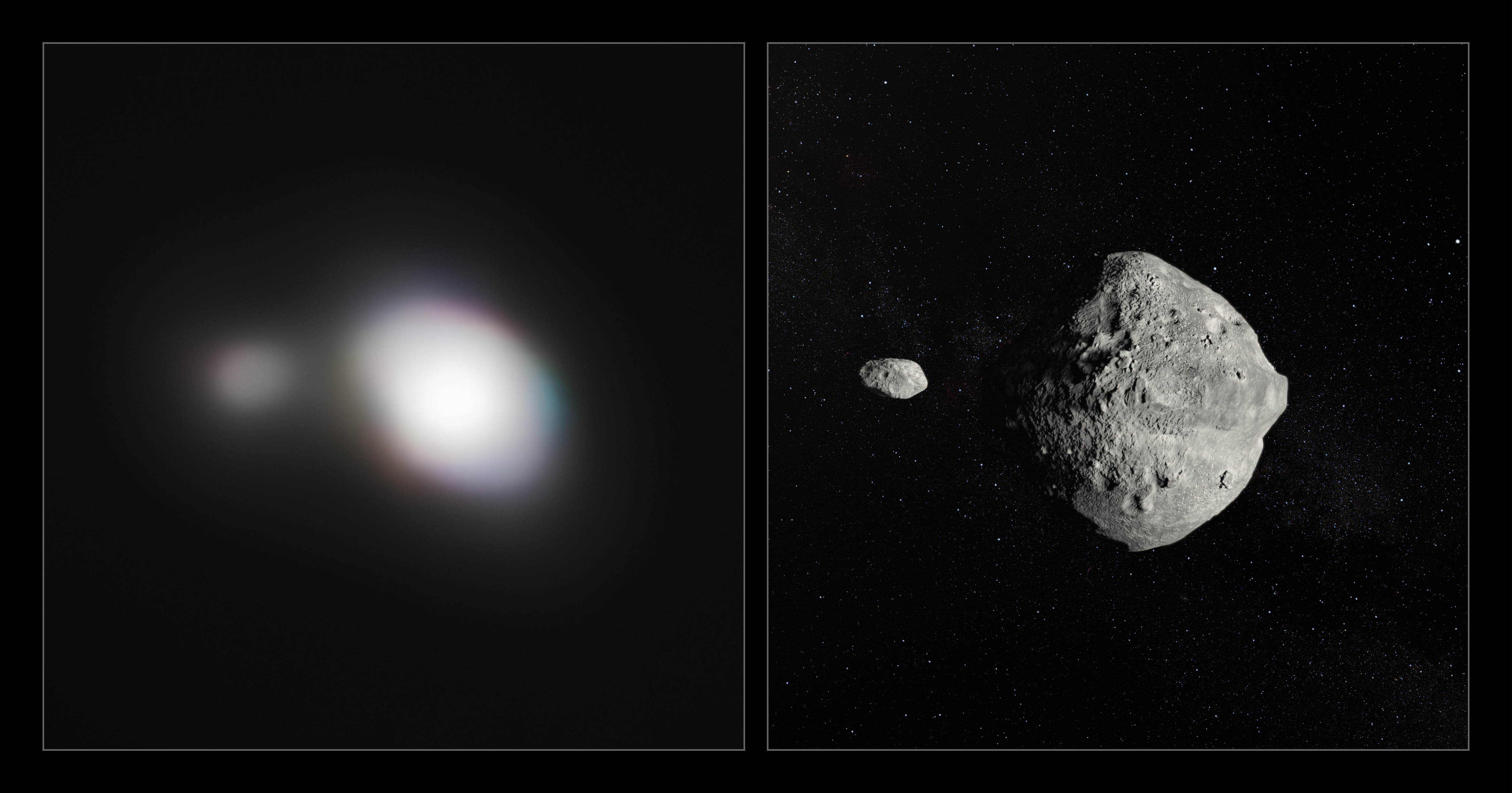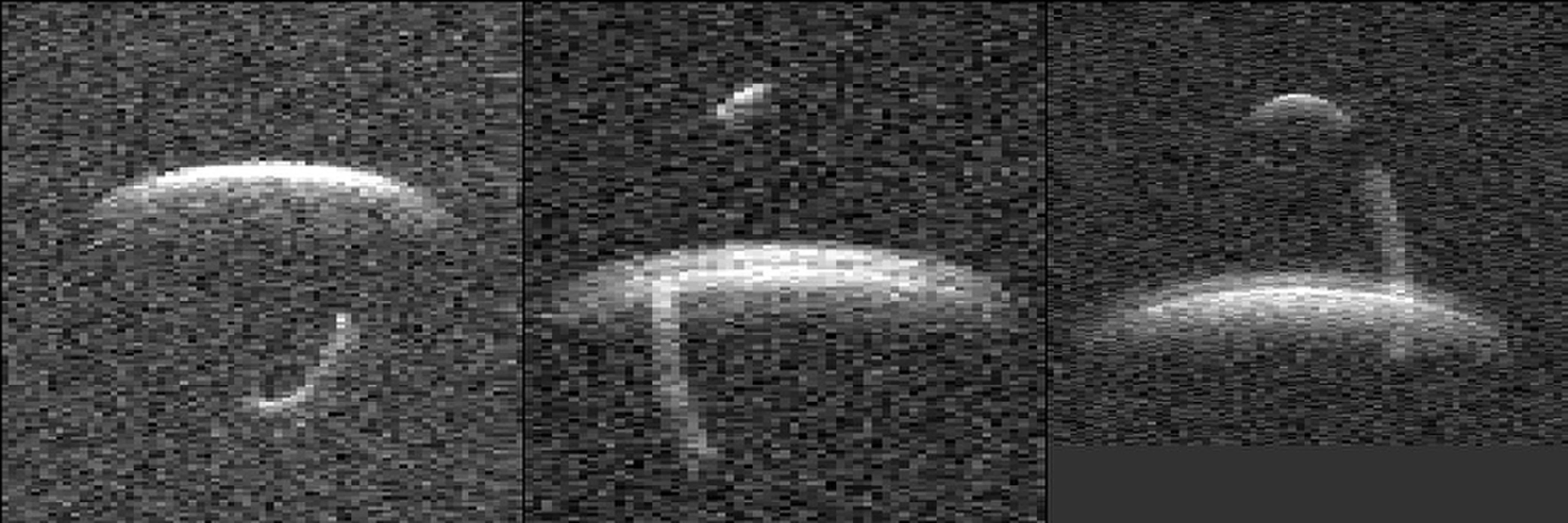Telescope Spots Double-Asteroid System During Close Flyby of Earth
The "potentially hazardous" asteroids flew by on May 25.
A recent close encounter with a large asteroid and its little moon was captured by a telescope as the pair zipped past Earth at 43,500 miles per hour (70,000 kilometers per hour) on May 25.
The image, captured by the European Southern Observatory's (ESO) Very Large Telescope on May 25 and released on June 3, shows asteroid 1999 KW4 and its accompanying satellite whizzing past Earth at a safe distance of about 3.2 million miles (5.2 million km). Asteroid 1999 KW4 is about 0.8 miles (1.3 km) wide, and its little companion orbits at a distance of around 1.7 miles (2.6 km).
Even though this asteroid was not at risk of colliding with our planet, its image could provide useful data on asteroid deflection, should one be headed toward Earth in the future.
Related: Potentially Dangerous Asteroids (Images)
"In the worst possible case, this knowledge is also essential to predict how an asteroid could interact with the atmosphere and Earth's surface, allowing us to mitigate damage in the event of a collision," ESO astronomer Olivier Hainaut said in a statement.
Asteroid 1999 KW4 also bears similarities to another double-asteroid system, Didymos, the target of NASA's planned Double Asteroid Redirection Test (DART). The mission will crash a spacecraft into Didymos' own moon — nicknamed "Didymoon" — in order to observe its orbital shift around the asteroid, and it will collect data that could help scientists figure out how to deflect potentially hazardous asteroids in the future.
Both binary asteroids are no strangers to us. In fact, this was the fourth time that 1999 KW4 has made its way past Earth since it was discovered in 1999. In 2001, NASA's Goldstone radar telescope obtained radar images of the asteroid-and-moon system as it flew past Earth at a distance of more than 3 million miles (4.8 million km).
Breaking space news, the latest updates on rocket launches, skywatching events and more!
- 6 Asteroids Will Buzz Earth Within a 2-Year Span and Scientists are Psyched
- Rare Disintegrating Asteroid Spied by Hubble Telescope
- Huge Asteroid Apophis Won't Hit Earth in 2036
Follow Passant Rabie on Twitter @prabiez. Follow us on Twitter @Spacedotcom and on Facebook.

Passant Rabie is an award-winning journalist from Cairo, Egypt. Rabie moved to New York to pursue a master's degree in science journalism at New York University. She developed a strong passion for all things space, and guiding readers through the mysteries of the local universe. Rabie covers ongoing missions to distant planets and beyond, and breaks down recent discoveries in the world of astrophysics and the latest in ongoing space news. Prior to moving to New York, she spent years writing for independent media outlets across the Middle East and aims to produce accurate coverage of science stories within a regional context.


